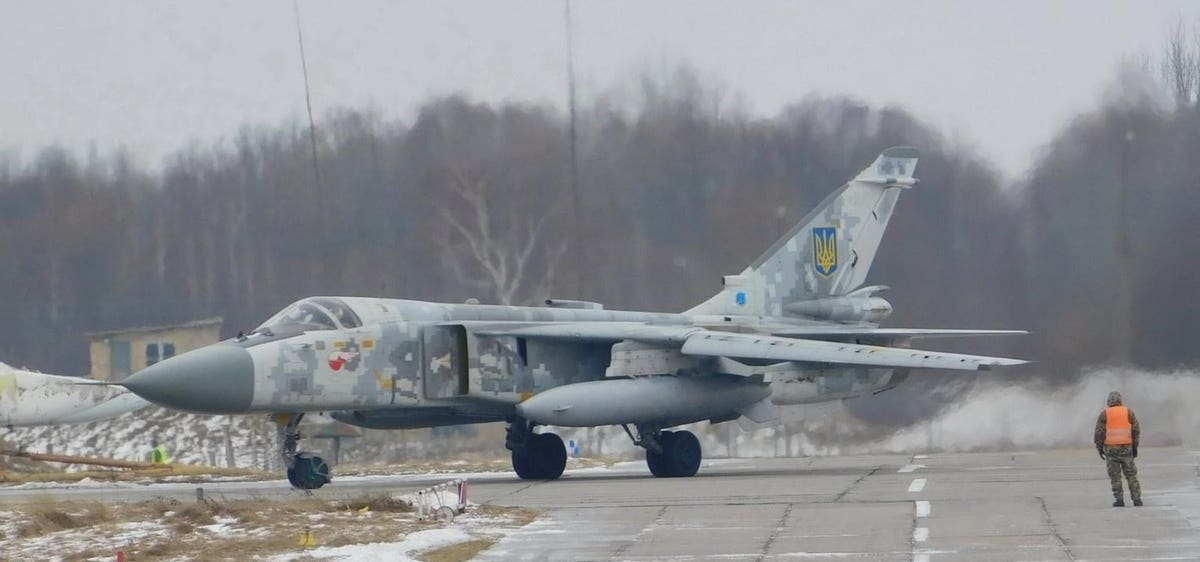Russian admirals knew they had a problem.
This summer, the Ukrainian air force’s sole bomber unit—the 7th Tactical Aviation Brigade—began arming its 1970s-vintage Sukhoi Su-24s with British-made Storm Shadows and ex-French SCALPs: stealthy, subsonic cruise missiles each with a nearly 200-mile range.
Su-24s firing Storm Shadows and SCALPs began plucking at the Russian army’s logistical system in occupied southern Ukraine, striking depots, repair yards and bridges.
The staff of Russia’s Black Sea Fleet—30 large warships scattered across ports in southern Russia and occupied Crimea—sensed their vessels might be the next targets. They began painting elaborate camouflage on some ships, hoping the paint would confuse the cruise missiles’ imaging-infrared sensors.
The admirals were right to be worried. They were wrong to assume a little paint would protect their ships. On Wednesday morning, Ukrainian bomber crews fired a volley of Storm Shadow or SCALP cruise missiles at the Black Sea Fleet base in Sevastopol, in southern Crimea.
Ukrainian forces already had cleared a path for the missiles by blowing up, with a modified navy anti-ship missile, the Russian air force’s long-range S-400 air-defense battery in western Crimea—and by sending commandos to dismantle Russian sensors on a pair of captured Ukrainian oil platforms in the waters west of Crimea.
There was no stopping the 7th TAB’s cruise missiles as they streaked right through the remains of Russia’s Crimean air-defenses on Wednesday and struck a drydock belonging to the Black Sea Fleet’s 13th Ship Repair Plant in Sevastopol.
The two ships in the drydock—a Ropucha-class amphibious ship and a Kilo-class submarine—burned through the night. In the morning, imaging satellites spotted two roasted hulks: proof both vessels likely were beyond repair.
Ukrainian air force commander Lt. Gen. Mykola Oleschuk praised the bomber crews. “While the occupiers … are still recovering from nighttime explosions in Sevastopol, I would like to thank the pilots of the air force of the armed forces of Ukraine for their excellent combat work,” Oleschuk wrote on Telegram.
The raid was the culmination of months of effort by Ukraine and its allies to arm the bomber regiment’s Sukhois, reduce Russian defenses and then strike when two valuable ships were most vulnerable: when they were out of the water.
In 19 months of hard fighting with an enemy that has no major warships, the Black Sea Fleet has lost a cruiser, three amphibious ships, a submarine, a supply ship and several patrol boats and landing craft. It cannot make good these losses as long as the war continues and Turkey prohibits the passage of warships through the Bosphorous Strait into the Black Sea.
And the losses almost certainly will continue. The Ukrainians have proved they can strike Russian warships in ports in both Crimea and Russia proper. No port is safe for what remains of the Black Sea Fleet.
Read the full article here





